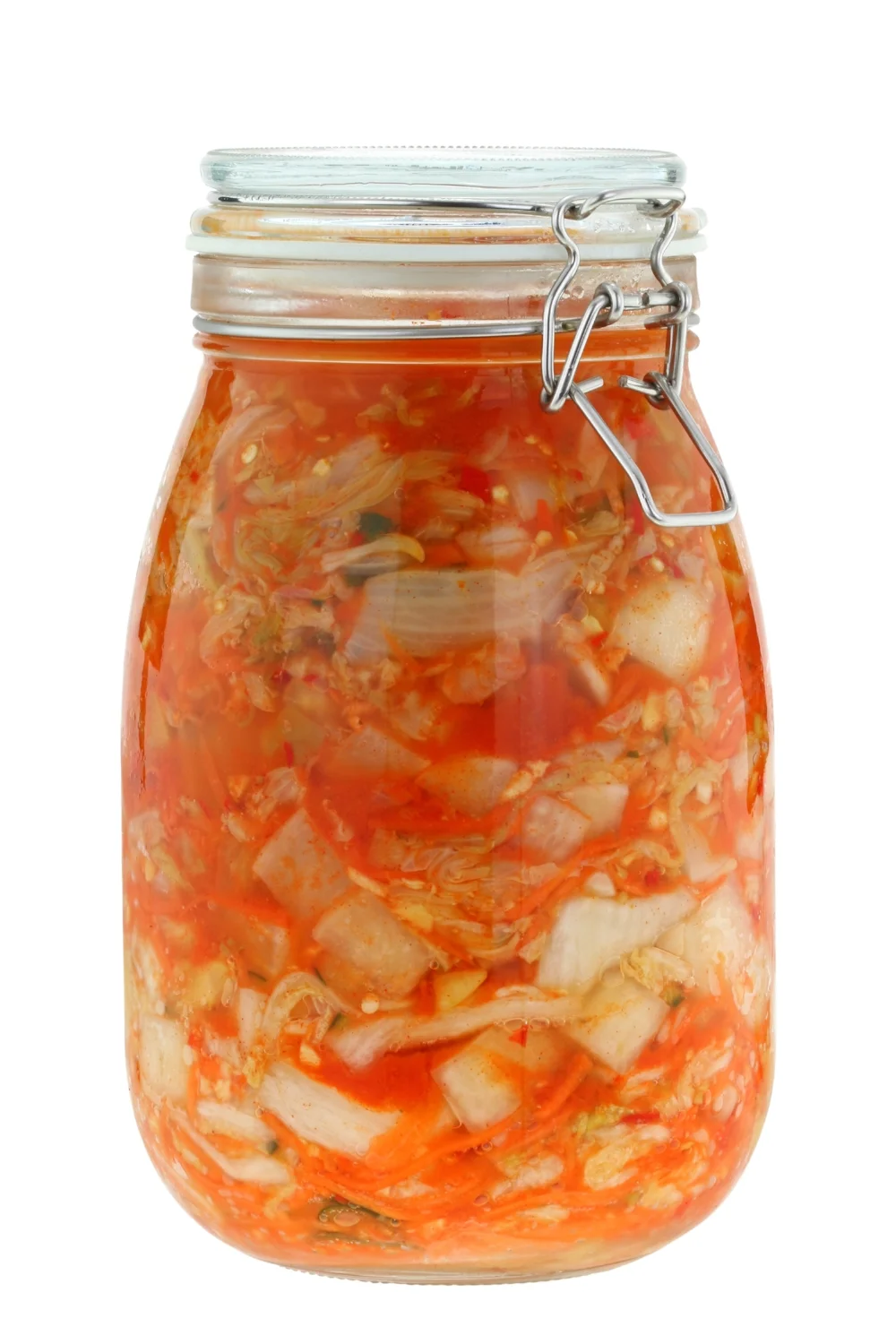Kraut with Cauliflower & Curry - Recipe
This post contains affiliate links to products that I use myself or can recommend. My affiliate policy.
"Why does it take so long?" "When can I taste it?" These are the questions that pop out of hubby's speech organ EVERY day when he passes this jar of fermenting yellow veggies. And every time I "patiently" repeat that good kraut (fermented produce where cabbage is the main ingredient) needs time to develop that classical sour taste - hence the name sauer-kraut... About 3-4 weeks.
I found this recipe on Aarstiderne - I haven't tested it yet, but it looked delicious. If you feel tempted too to get your finger muscles, gut, and taste buds in shape with this curry-kraut, then dig into this recipe, but don't forget to use gloves when you massage the veggies because otherwise, that curry stays on your fingers and nail for a while.
Recipe
Props:
Large mixing bowl
Sharp knife
Ingredients:
56 oz. / 1600 g cabbage
5 oz. / 150 g carrots
5 oz. / 150 g cauliflower
3.5 oz. / 100 g onions
1.5 oz. / 40 g curry powder
1.4 oz. / 41 g salt
1.7 oz. / 50 g raisins
Instructions:
Wash and process the vegetables. Be sure to rinse the skins of each vegetable thoroughly.
Remove one or two of the outer leaves of the cabbage and put it aside.
Slice the cabbage into quarters
Remove the core (it’s got some sugar in it that you don’t want), then chop into 1 cm wide strips.
Grate the carrots
Chop the cauliflower - also remove its core.
Peel and dice onions.
Weigh all the ingredients except the outer cabbage leaves, raisins, and curry and place them in a large mixing bowl.
Massage the veggies with clean hands (or wear disposable gloves) to release their juices– about 5-10 minutes.
Transfer the kraut mixture to your preserving jar, pressing down as you pack the jar so that more brine juices are released. Fill the jar up.
Smash it down; make sure the kraut is below the brine, that so it goes anaerobic, which means that there is no oxygen in the solution. The bacteria you try to cultivate are anaerobic, and oxygen can cause all kinds of problems like mold and yeast.
Fold the leaves you set aside in the beginning and place them on top of your kraut using them to press the veggies under the brine.
Seal the jar and place out of direct light.
Allow to ferment for 21-28 days at room temperature. Warmer temperatures will speed up the process, cooler will slow it down.
The lid must be opened every day to allow the jar to “burp” (release built-up gases).
Taste your kraut after 21 days. You want it to taste sauer. Have a little patience with it. I find the kraut to be best after about 3-4 weeks time for flavor and texture.
When you're happy with taste and texture, transfer your kraut to a cooler temperature. Place it in the cellar or in your refrigerator. This will slow down the fermentation process, allowing you to keep it for several months.
Use:
Serve with meat, eggs, fish dishes or with rice or other vegetables.
General thoughts on fermentation:
Start slow. If you are new to fermented foods, start with very small portions and proceed slowly.
The ideal temperature for lacto-fermentation of fruit and vegetables is 22 degrees.
Taste your ferment every day. There's no special moment at which a ferment is "ready" - it's all a matter of taste. After just a day or two, the ferment will develop a tang. Keep tasting it every day until it reaches the level of tartness you want.
A good sign that your vegetables will be ready is when you open the jar and there is a sour (think vinegar-y) flavour, and bubbles start to travel up the inside of the glass when tapped or moved. At this point, transfer to the fridge, where they will continue fermenting, but at a much slower pace.
Mold. If some vegetables emerge at the top of the liquid, they may develop a layer of mold. Simply scrape this off and make sure the remaining vegetables are weighted under the liquid. The mold is harmless and will not ruin the ferment.
















